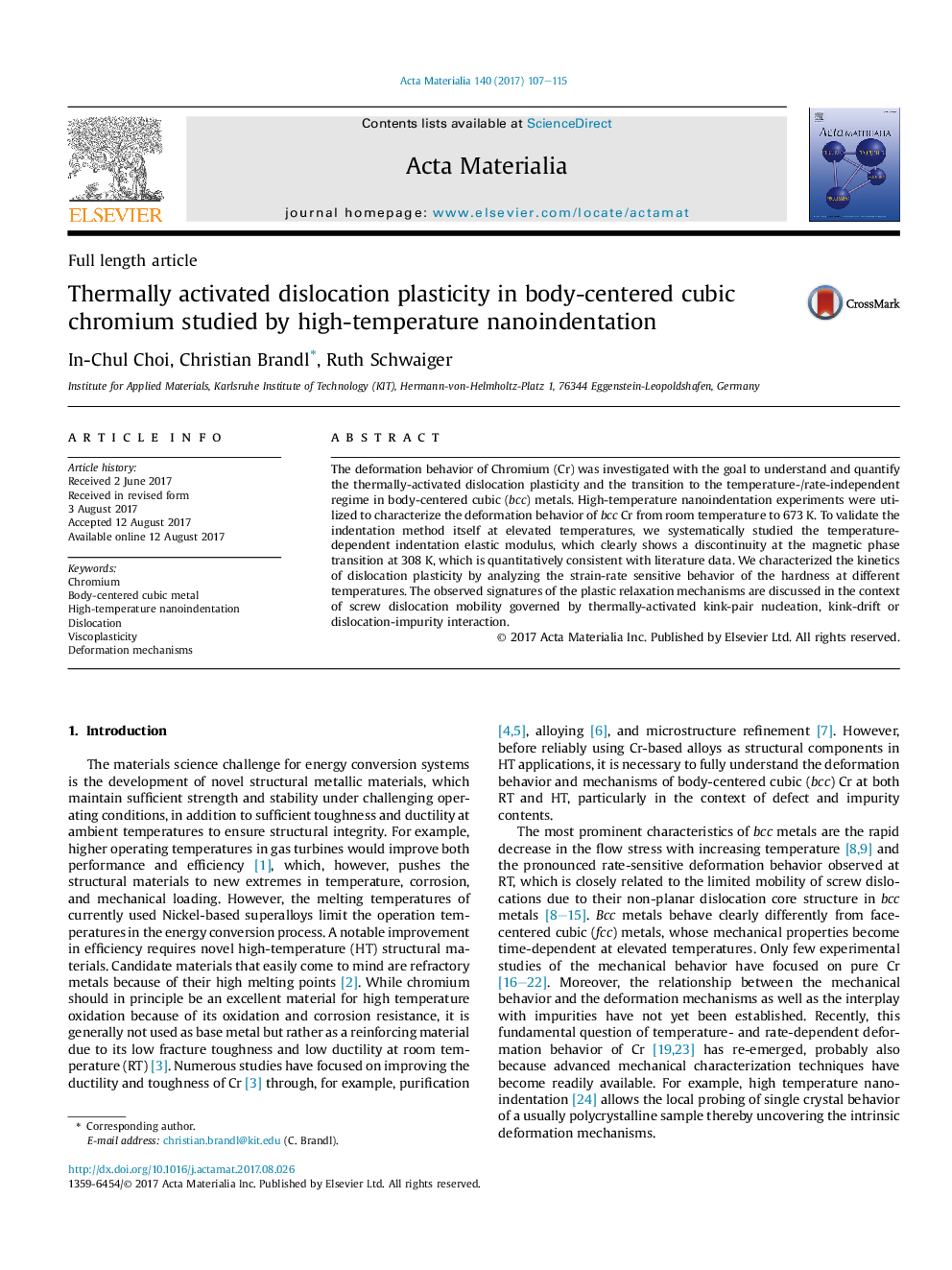| Article ID | Journal | Published Year | Pages | File Type |
|---|---|---|---|---|
| 5435759 | Acta Materialia | 2017 | 9 Pages |
The deformation behavior of Chromium (Cr) was investigated with the goal to understand and quantify the thermally-activated dislocation plasticity and the transition to the temperature-/rate-independent regime in body-centered cubic (bcc) metals. High-temperature nanoindentation experiments were utilized to characterize the deformation behavior of bcc Cr from room temperature to 673Â K. To validate the indentation method itself at elevated temperatures, we systematically studied the temperature-dependent indentation elastic modulus, which clearly shows a discontinuity at the magnetic phase transition at 308Â K, which is quantitatively consistent with literature data. We characterized the kinetics of dislocation plasticity by analyzing the strain-rate sensitive behavior of the hardness at different temperatures. The observed signatures of the plastic relaxation mechanisms are discussed in the context of screw dislocation mobility governed by thermally-activated kink-pair nucleation, kink-drift or dislocation-impurity interaction.
Graphical abstractDownload high-res image (216KB)Download full-size image
